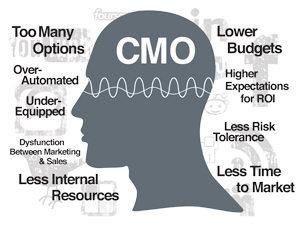As a social media practitioner, I find inspiration in the social world, not just in marketing and advertising. I wish I had come up with this phrase but I owe it to an episode of Arthur, the PBS series for kids.
 Arthur’s friend, Muffy, an avid collector, sets to buy out as many dolls as she can in a place mirroring American girl; on the other hand, her friend only wants to buy an accessory for her one and only doll that she nurtures. I had watched the World Girl’s episode several times before with my daughter, but that sentence never stood out until that day where I heard Sue Ellen say to Muffy : It’s not about collecting, it’s about connecting.
Arthur’s friend, Muffy, an avid collector, sets to buy out as many dolls as she can in a place mirroring American girl; on the other hand, her friend only wants to buy an accessory for her one and only doll that she nurtures. I had watched the World Girl’s episode several times before with my daughter, but that sentence never stood out until that day where I heard Sue Ellen say to Muffy : It’s not about collecting, it’s about connecting.
I had an *Aha* moment. This short sentence has a very significant meaning in my social media practice. It is that sentence, sounding like a mantra, that should be the core mission of companies; instead, most set out to collect as many fans and followers as they can in a very short time. Therefore, Collecting is done with little to no regards to the value they bring to their following. Of course, collecting a fan base is not the only objective of social media initiatives. Many other marketing initiatives, such as email marketing campaigns, greatly focus on this notion that a success is measured by the number of people one can collect.
Brands, companies, marketing departments, digital agencies and entrepreneurs are all guilty of promising their clients the holy grail of social media: voraciously amassing as many unsuspecting people on their social pages as possible; some brands manage to commit friends/fans/followers into liking them, thereby, building a base of relatively qualified prospects. Some companies even go as far as buying friends for their Facebook account or followers for their Twitter account. I would not see anything wrong with it if it wasn’t for a smalldetail: Once people like you, then what?
Social media has smashed the door open for people to take back some control; now, consumers don’t only want to like your brand, they want to emotionally connect with your brand personality and identity, pretty much like with friends. Yes, people want to have a relationship with your brand. This cultural change within the business and social worlds reflects a shifting balance of powers; the nature and level of the interaction between a brand and a person has totally changed.
Having a huge fan base on your facebook page or twitter account doesn’t reflect the relationship with your audience. Whichever way your fans and followers are acquired – whether you buy their affection by giving them free stuff, tease them with a contest or just because you are such a strong brand that it is alright to like you – the staying power of friend/fans/follower is reflected by how well and how deep you connect with them. And this requires the RIGHT strategy for your audience. Duplicating what another company does and succeeds in, doesn’t cut it. Each audience requires a custom message and interaction from a brand.
Brands are still measuring the traditional way, they are still equating success with impressions and eye-balls; Decision-makers are not fully comprehending that social media is not about campaigning only. Social media is about long-term relationships. Unfortunately, most brands and businesses are still in the race to collect and convert and totally overlook the connect part. The three Cs of social media business Collect, Connect, Convert are each equally important, as part of the brand management.
Brands who consciously make the decision to dip more than one toe into the social media arena, have to make that same conscious decision to start connecting with their people in a way that is true to the brand and to the customer, to allow the relationships to develop and grow; this includes assigning an appropriate budget and empowering the resources.
Collectively, brands have to start treating people as informed, connected, and savvy consumers who clearly demand more than just a business transaction.
What do you think?
Karima-Catherine Goundiam
 I recently had the opportunity to be the keynote speaker at the “Ignite Your Growth” Conference in Atlanta at the new HP Graphic Arts Experience Center. Knowing that the audience would consist of printing professionals interested in growing their businesses, I thought it would be interesting to discuss an individual they probably have on their prospect list – the CMO.
I recently had the opportunity to be the keynote speaker at the “Ignite Your Growth” Conference in Atlanta at the new HP Graphic Arts Experience Center. Knowing that the audience would consist of printing professionals interested in growing their businesses, I thought it would be interesting to discuss an individual they probably have on their prospect list – the CMO. As a consumer, you are blasted with the same request over and over, “Follow Us on Twitter, Like Us on Facebook” As a consumer however it is more than natural to ask why should I or what’s in it for me? These are questions of which a significant number of businesses cannot genuinely answer.
As a consumer, you are blasted with the same request over and over, “Follow Us on Twitter, Like Us on Facebook” As a consumer however it is more than natural to ask why should I or what’s in it for me? These are questions of which a significant number of businesses cannot genuinely answer. Today a notable number of businesses are approaching branded social channels from a ready, fire, aim approach. This method conjures a façade of achievement when in fact, any progress, if at all recognized, is short term and shoddy at best. Many focus on numbers without first analyzing who they’re trying to reach and why and more importantly how engagement satisfies the needs of their customers. To build vibrant communities in social networks, businesses must develop a remarkable and diversified channel strategy that reinforces the brand and communicates tangible business value and exudes customer-centricity. Without a mature content and engagement strategy, a great unfollow and unlike movement is inevitable.
Today a notable number of businesses are approaching branded social channels from a ready, fire, aim approach. This method conjures a façade of achievement when in fact, any progress, if at all recognized, is short term and shoddy at best. Many focus on numbers without first analyzing who they’re trying to reach and why and more importantly how engagement satisfies the needs of their customers. To build vibrant communities in social networks, businesses must develop a remarkable and diversified channel strategy that reinforces the brand and communicates tangible business value and exudes customer-centricity. Without a mature content and engagement strategy, a great unfollow and unlike movement is inevitable. Arthur’s friend, Muffy, an avid collector, sets to buy out as many dolls as she can in a place mirroring American girl; on the other hand, her friend only wants to buy an accessory for her one and only doll that she nurtures. I had watched the World Girl’s episode several times before with my daughter, but that sentence never stood out until that day where I heard Sue Ellen say to Muffy : It’s not about collecting, it’s about connecting.
Arthur’s friend, Muffy, an avid collector, sets to buy out as many dolls as she can in a place mirroring American girl; on the other hand, her friend only wants to buy an accessory for her one and only doll that she nurtures. I had watched the World Girl’s episode several times before with my daughter, but that sentence never stood out until that day where I heard Sue Ellen say to Muffy : It’s not about collecting, it’s about connecting.